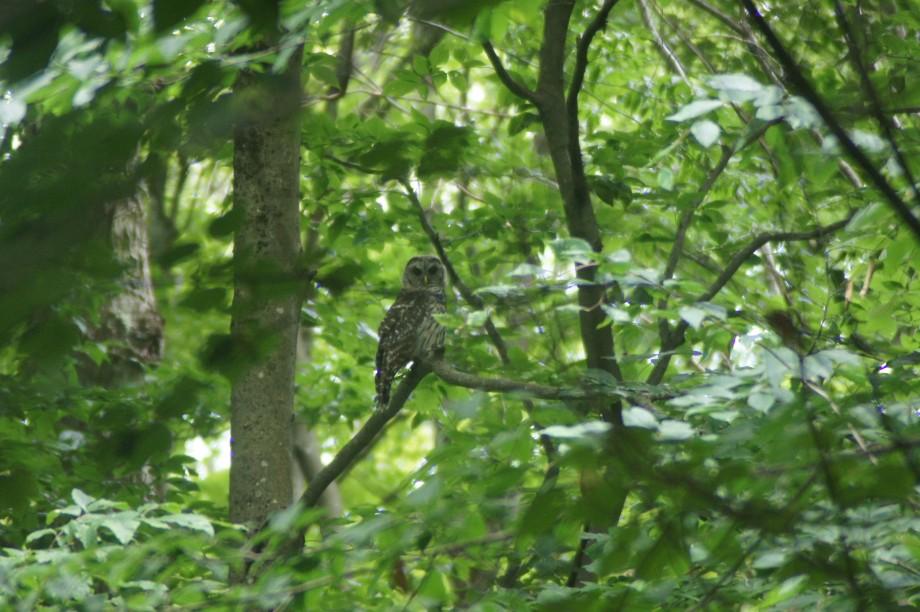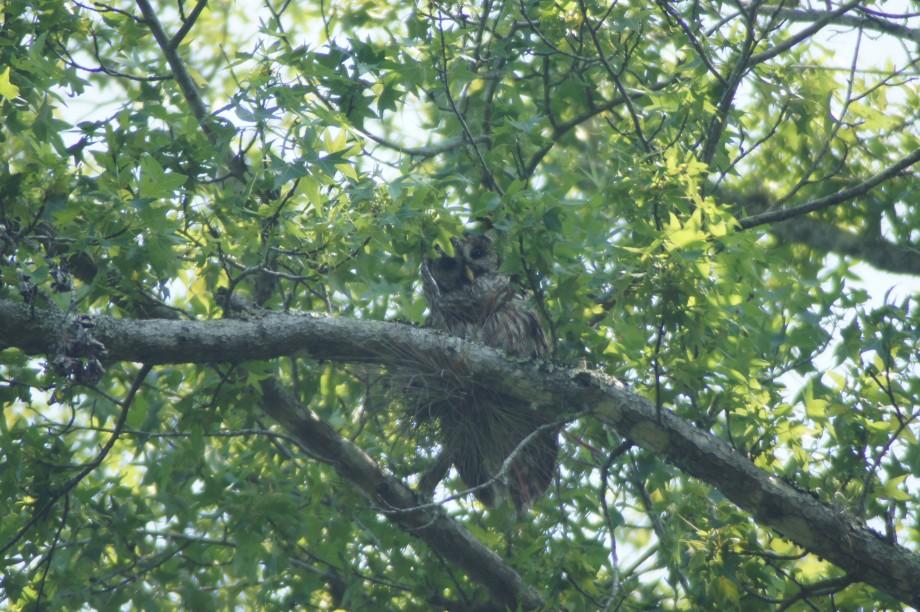A few weeks ago while conducting bird surveys on the Jackrabbit Trail in Saranac Lake, I found two recently fledged barred owls. Baby barred owls from the same nest generally stick together for several weeks after fledging and are tended by their parents for a couple months after they leave the nest. The owls I found could fly, but like many young birds, were not particularly adept at it, making ungraceful flaps, and landing unceremoniously in the branches.
The owls were also making begging calls, making them easier to find. Young barred owls give a raspy, begging vocalization that has a snapping quality to it, particularly as they get older. The begging, of course, is a solicitation for food from their parents, and also serves to maintain contact between siblings and their parents as well.

I had another encounter with baby barred owls last week while I was teaching at Cranberry Lake Biological Station in the western Adirondacks. I took several students out for a night owl walk and hooted – eliciting an answer from a distant adult owl. Then nearby a young owl gave a begging call. Then another, and another, and before we knew it we had four – count them, four! – recently fledged owls around us begging in the trees. Three of them sat on one snag directly in front of us, begging – all the size of adults, but their feathers were still not fully in, giving them a sort of haggard appearance.
Barred owls generally only have two-three eggs in a nest; predatory birds have to catch a lot of prey to feed their young and can usually only raise a couple young successfully at most. To have four eggs is unusual, and to raise four young is outstanding, showing just how good the mousing has been this year.
Indeed, by all accounts, small mammal numbers are through the roof this year – borne out by researchers who study them, and anecdotally by almost anyone I've spoken with in the field. After all, students were catching loads of mice in their cabins at Cranberry Lake – as did I when I was live-trapping them this year while I was staying at Cranberry. In fact, it was risky to leave any food out – even during the day – many students lost all or some of their lunches to mice and chipmunks and several had their backpacks chewed through as the industrious animals searched for food. These rodents, it seems, are not only abundant, but quite clever in finding food as well.
There are likely a variety of reasons why rodent numbers are so high – including last year's mild winter and our warm spring. For the owls, this offers a big contrast to the winter of 2010-2011 which was very hard on them. Deep snow and cold temperatures meant greater energy expense in finding food, and rodents could safely tunnel beneath feet of snow. We found many barred owls actively hunting during the day in late winter – a sign of a desperate bird – and many ended up starving or being taken emaciated and barely alive to area wildlife rehabbers.

My most recent success with baby barred owls didn't stop there, though. Kendra, Wren, and I hiked St. Regis Mountain in Paul Smith's this past weekend, a great hike that was highlighted by us finding three fledged barred owls flying here and there and begging not far from the trailhead. I was even able to snap a few photos of one that watched us intently with its big, dark, inky-black eyes. It marked yet another successful nest for barred owls this year. So keep your eyes and ears open when you are out in the woods for the next several weeks. Young barred owls are always fun to find.




